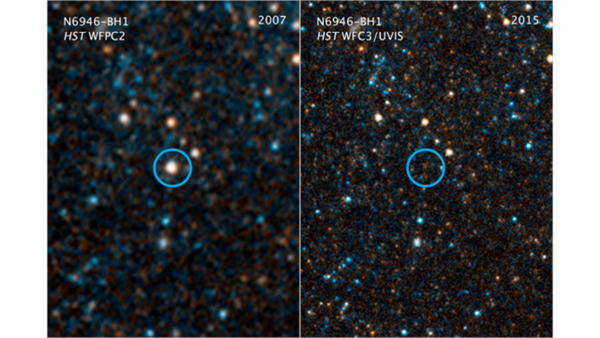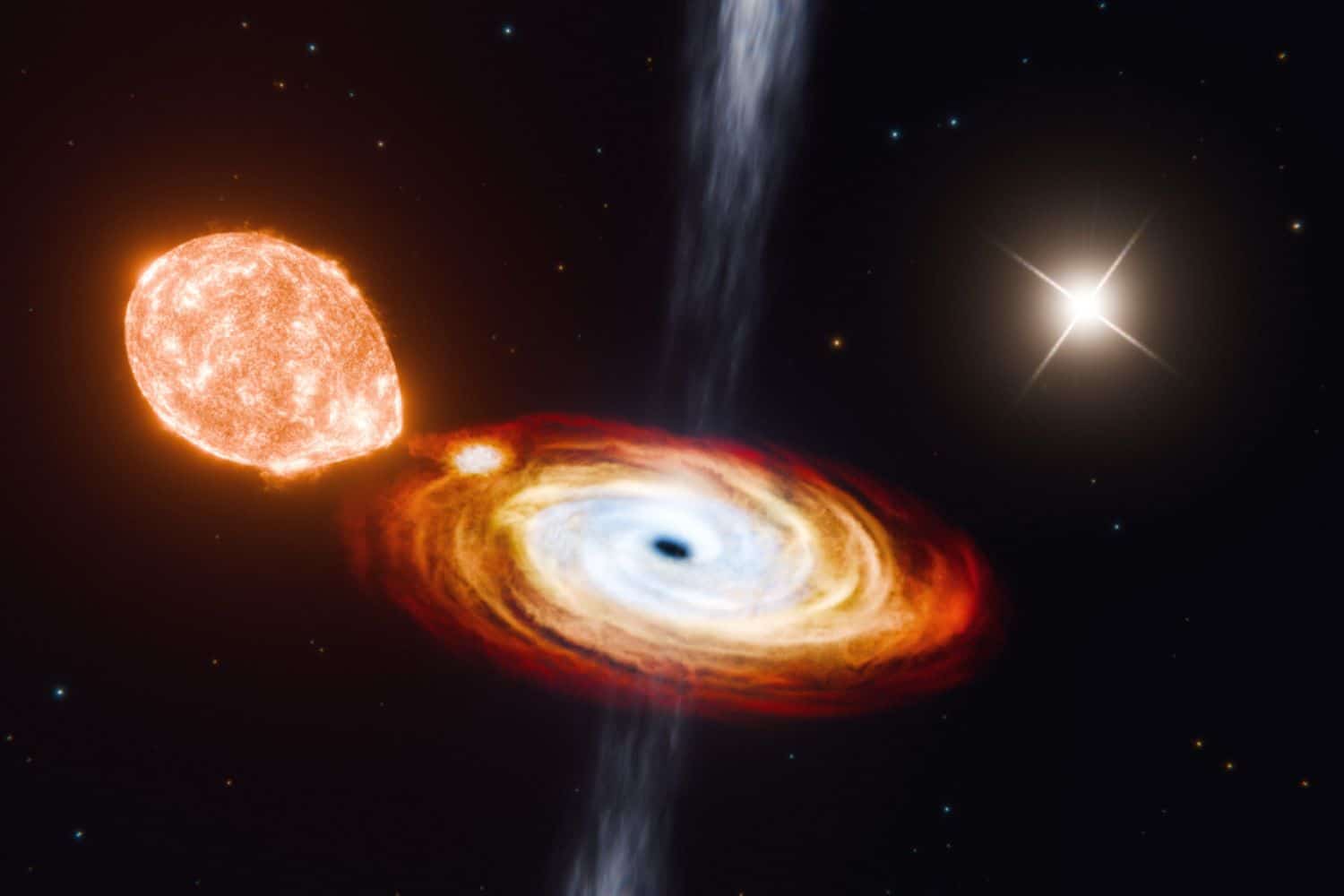Key Takeaways
- Hubble may have captured a rare moment when a star collapsed into a black hole.
- Instead of exploding, the star’s gas was pulled into the black hole at its center.
- This type of collapse, known as a “massive fail,” is extremely rare.
- The star was located 22 million light-years away in the galaxy NGC 6946.
- The event’s instant fading suggests a powerful black hole formation process.
__________
Hubble saw a star blink out 22 million light-years away — hinting at a black hole birth.
When massive stars exhaust their fuel, they typically end their lives in spectacular explosions called supernovae. These explosive events scatter stellar gas outward and often leave behind either neutron stars or black holes. However, new observations from the Hubble Space Telescope suggest an unusual alternative outcome, where a massive star in the galaxy NGC 6946 may have collapsed directly into a black hole without the usual explosive display.
The Event: A “Massive Fail” Supernova
In rare cases, a star’s core collapse results in what astronomers have nicknamed a “massive fail.” Instead of exploding outward, the gas is pulled inward into the core, which then forms a black hole. This type of collapse happens when the star is exceptionally massive. With so much gravitational force, the collapsing gas cannot escape and instead falls back into the star’s core. The Hubble observations indicate that the star initially brightened like a typical supernova but then quickly vanished from view, suggesting the gas had been consumed by the forming black hole at the center.
Only a handful of these “massive fail” events have been observed. Astronomers remain cautious with their conclusions due to the rarity of such events, but this particular case provides compelling evidence. The star, located 22 million light-years away, became briefly visible and then faded almost instantaneously. This sudden disappearance aligns with the theory of a direct collapse into a black hole.

Implications for Understanding Stellar Death
The study of “massive fail” events like this one has significant implications for understanding the life cycles of massive stars. Traditional supernova explosions create nebulae, or gas clouds, that persist for thousands of years. In contrast, direct collapses result in a much cleaner, quieter formation process, leaving no visible gas clouds behind. If astronomers can confirm more of these “failed” supernovae, it could provide insight into the formation rates of black holes and the final stages of massive stars.
The “failed” supernova in NGC 6946 also highlights the importance of high-powered telescopes like Hubble, which can detect faint and distant cosmic events. As astronomers continue to observe the universe in greater detail, they may uncover additional cases of direct black hole formation. While the exact nature of this event remains under study, the disappearance of a star from such a distance is a rare cosmic occurrence. This potential “massive fail” represents a valuable discovery for scientists seeking to understand the mysteries of star death and black hole formation.




